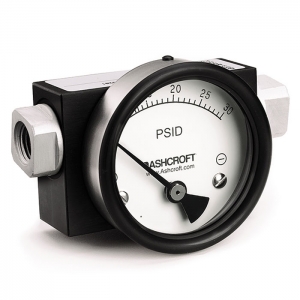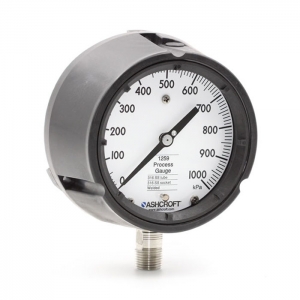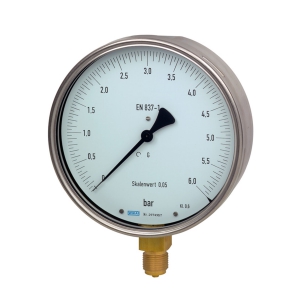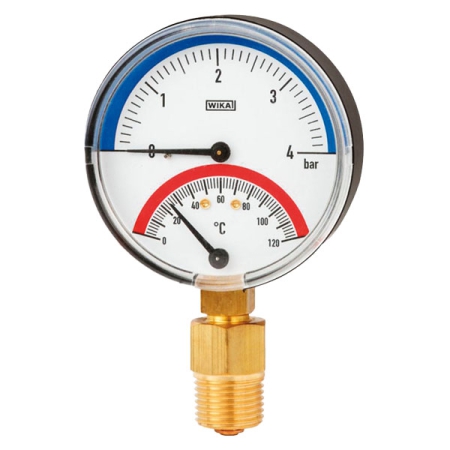Manometer
A manometer or pressure gauge is an instrument for measuring the pressure of a column of liquid, which is usually water or mercury.
The height of this column shows the pressure value, if mercury is used in the manometer, it is called mercury manometer or pressure gauge. If water is used, it is called a water pressure gauge.
A manometer is a type of pressure gauge that has a U-shaped glass tube that is open on both sides and is filled with some mercury.
When both side of the tube are connected to the atmosphere, the atmospheric pressure acts on both tubes and the height of mercury in both columns will be equal.
The height of the mercury column at this point is determined as the base, and to read the deviation of the mercury column from zero conditions, the manometer is calibrated in both directions in terms of millimeters.
What is a vacuum and what is its use?
Pressures less than atmospheric are usually vacuum and are read in millimeters of mercury.
Due to the difference in the density of mercury and water, pressures that has a small effect on the height of the mercury column will cause significant changes in the height of the water column.
Therefore, water manometers will be useful for measuring very low pressures.
- Display 15 Products per page
Types of manometer
1) U-tube manometer
This is probably the most common manometer in use today.
2) Barometer
A Barometer consists of a glass tube with one end sealed.
3) Inclined Manometer
Inclined manometer is a manometer that provides even better accuracy than the U-tube manometer.
Bourdon tube manometer
This type of gauge is one of the most widely used types of pressure gauges.
Some of them are able to measure pressures above 600 bar.
Differential pressure gauge (manometer) is used to measure the differential pressure between two points. Measuring the differential pressure at two points has particular importance in the oil, gas and petrochemical industries. In general, chemical reactions are widely influenced by pressure and the balance in pressure will greatly contribute to the stability of the system.
For example, the pressure difference between two tanks in an industrial project can lead to an explosion and impose financial and life costs on the industrial unit. In general, the pressure difference gauge of a device has two inputs. In this way, two tanks or two piping systems that are connected to the measuring device by a tube. A different pressure is applied to the pressure gauge measuring system from each side.
Manometer applications
Some manometer applications include:
– Oil, gas
– Petrochemical
– Refinery
– Power plants
– Clean rooms
– Fluid flow measurements
– HVAC systems maintenance
– Furnace gas valve pressure measurement
Manometer is known for pressure measurement, but it has other applications besides pressure measurement. Manometer also has the following applications:
- Measuring height above sea level
- Depth measurement
- Flow measurement
- Leakage measurement
Choosing and installing a manometer, is highly sensitive. Important parameters to consider when choosing a manometer:
- Working pressure range
- Diameter
- Measurement accuracy
- Operating temperature
- Display
- Vacuum pressure range
- Connection
- Application
- Measurement




